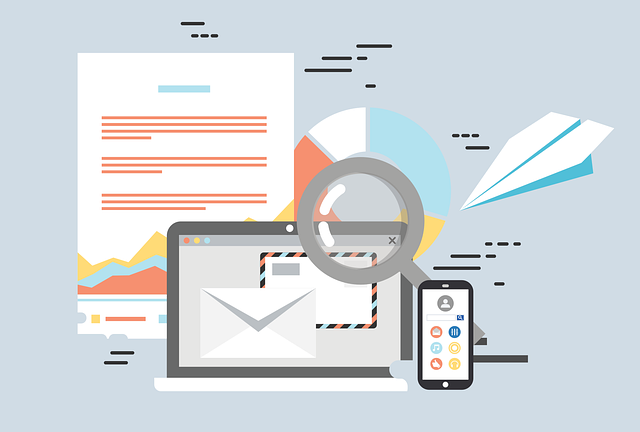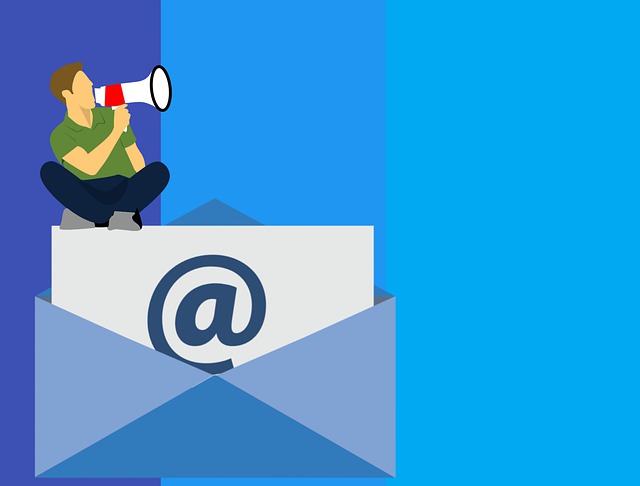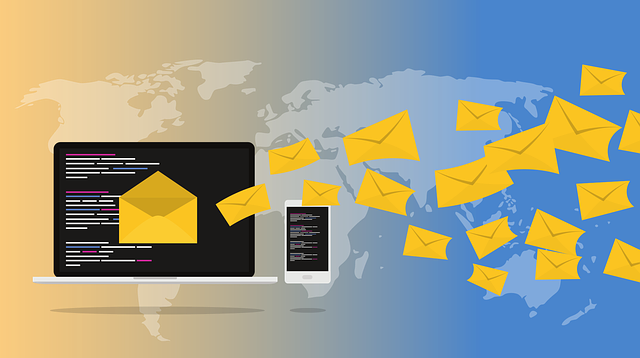Are you a restaurant owner looking to maximize your marketing efforts? With so many digital platforms available, it can be overwhelming to choose the most effective strategy. But fear not, we’re here to help you navigate the ever-evolving world of marketing.
Let’s start by asking a question: in the battle of email marketing versus social media, which is better for your restaurant?
In this article, we’ll explore the pros and cons of both email marketing and social media for restaurants. We’ll delve into the importance of targeting your audience and building strong customer relationships. We’ll also discuss the cost-effectiveness of each strategy and the importance of measuring success through analytics. Furthermore, we’ll highlight how both email marketing and social media can expand your reach and visibility.
By the end of this article, you’ll have a clear understanding of which approach suits your restaurant’s goals best. So, let’s dive in and discover how to integrate these strategies for maximum impact in your marketing efforts.
Key Takeaways
- Social media allows for personalization, segmentation, and targeting specific demographics, interests, and behaviors.
- Email marketing consistently shows higher ROI compared to social media, with an average ROI of $38 for every $1 spent.
- Constant monitoring and analysis of analytics allow for data-driven decisions to improve marketing efforts and maximize reach and visibility.
- Integrating email marketing and social media allows for cross-promotion opportunities and personalized messaging to drive customer engagement and loyalty.
Targeting your audience
When it comes to targeting your audience, social media is a more effective tool than email marketing.
Social media platforms allow for personalization and segmentation in a way that email marketing simply cannot match. With social media, you can target your ads and content to specific demographics, interests, and behaviors, ensuring that your message reaches the right people at the right time. This level of personalization increases the likelihood that your audience will engage with your restaurant and convert into customers.
Additionally, social media provides real-time data and analytics, allowing you to track the effectiveness of your campaigns and make necessary adjustments to optimize your results. By leveraging the power of social media, you can build stronger and more meaningful customer relationships, which we will explore in the next section.
Building customer relationships
By leveraging the power of digital channels, you can establish meaningful connections with your patrons, creating a culinary experience that lingers on their taste buds and leaves a lasting impression. Building customer relationships is essential for fostering customer loyalty and repeat business. One effective way to achieve this is through personalized communication. By utilizing email marketing or social media, you can send tailored messages to your customers, such as personalized recommendations or special offers based on their preferences and previous interactions. This not only shows that you value their patronage but also increases the likelihood of them returning to your restaurant. To illustrate the impact of personalized communication, consider the following table:
| Email Marketing | Social Media |
|---|---|
| Personalized promotions | Engaging content |
| Exclusive offers | Direct customer interaction |
| Targeted emails | Instant customer feedback |
| Customized newsletters | Shareable content |
By building customer relationships through personalized communication, you can enhance customer loyalty and drive business growth. Now let’s explore the cost-effectiveness of these digital marketing strategies.
Cost-effectiveness
Enhancing customer loyalty and driving business growth, it’s important to consider the cost-effectiveness of these digital marketing strategies.
When comparing email marketing and social media for restaurants, it is crucial to analyze the return on investment (ROI) and budget allocation.
Email marketing has consistently shown higher ROI compared to social media, with an average ROI of $38 for every $1 spent. This is due to its targeted nature and ability to reach customers directly. Additionally, email marketing allows for personalized messaging, which enhances customer engagement and loyalty.
On the other hand, while social media platforms offer a wider reach and lower initial investment, they often require more resources and time to manage effectively.
Therefore, when considering cost-effectiveness, email marketing proves to be a more efficient strategy for restaurants.
Moving forward, measuring success and analytics will provide further insights into the effectiveness of these strategies.
Measuring success and analytics
To effectively measure the success of your digital marketing efforts, it’s essential for you to track and analyze the analytics of your campaigns. By tracking metrics such as open rates, click-through rates, conversion rates, and customer engagement, you can gain valuable insights into the effectiveness of your email marketing or social media campaigns.
These metrics provide data-driven evidence of what works and what doesn’t, allowing you to optimize your campaigns for better results. For example, if you notice a low open rate for your email marketing campaigns, you can make adjustments to the subject line or content to increase engagement. Similarly, if you find that certain social media posts generate higher click-through rates, you can replicate that success in future campaigns.
By constantly monitoring and analyzing your analytics, you can make data-driven decisions to improve your marketing efforts and maximize your reach and visibility.
Expanding reach and visibility
Maximize your digital marketing efforts by expanding your reach and visibility through innovative strategies that allow your brand to shine like a beacon in a crowded sea of competition.
Increasing brand awareness and attracting new customers are essential for the success of any restaurant. To achieve this, consider implementing the following strategies:
-
Utilize influencer partnerships to reach a wider audience and tap into their established followers.
-
Create engaging and shareable content that resonates with your target audience, encouraging them to spread the word about your restaurant.
-
Leverage search engine optimization techniques to improve your online visibility and attract organic traffic to your website.
By implementing these strategies, you can significantly increase your brand’s visibility and attract new customers.
As you expand your reach and increase brand awareness, you can then integrate email marketing and social media strategies for maximum impact in driving customer engagement and loyalty.
Integrating both strategies for maximum impact
Now that you understand the importance of expanding your reach and visibility through email marketing and social media, it’s time to explore how you can integrate both strategies for maximum impact.
By combining the power of email marketing and social media, you can create cross-promotion opportunities that allow you to reach a wider audience and drive more traffic to your restaurant.
For example, you can use social media to promote your email newsletter and encourage followers to sign up for exclusive offers and updates. On the other hand, you can leverage your email list to encourage subscribers to follow and engage with your restaurant on social media.
Additionally, integrating both strategies allows you to deliver personalized messaging to your audience, making them feel valued and increasing their loyalty to your restaurant.
By incorporating these tactics, you can maximize the effectiveness of your marketing efforts and achieve better results for your restaurant.
Frequently Asked Questions
How can I effectively target my audience for email marketing campaigns?
To effectively target your audience for email marketing campaigns, you can employ various targeting strategies and customer segmentation techniques.
Start by analyzing your customer data to identify key demographics, interests, and purchasing behaviors. This will enable you to create personalized and relevant email content that resonates with your audience.
Additionally, consider segmenting your audience based on factors like location, past purchases, or engagement level to tailor your messaging even further.
By leveraging these strategies, you can maximize the effectiveness of your email marketing campaigns.
What strategies can I use to build strong customer relationships through social media platforms?
To build strong customer relationships through social media platforms, focus on social media engagement and customer retention. Encourage followers to interact with your posts and respond to comments promptly. Provide valuable content that keeps them coming back. One effective strategy is to create a loyalty program exclusively for social media followers, offering special discounts or rewards. By fostering a sense of community and providing exclusive benefits, you can build long-lasting relationships with your customers.
How does the cost of email marketing compare to social media marketing for restaurants?
The cost of email marketing and social media marketing for restaurants can vary significantly. Email marketing generally has a lower cost compared to social media marketing.
With email marketing, you can reach a targeted audience at a relatively low cost, as you only pay for the email service provider and any additional tools you may use.
On the other hand, social media marketing can involve expenses such as paid ads, sponsored content, and influencer collaborations, which can increase the overall cost.
What are some key metrics and analytics I should track to measure the success of my email marketing and social media campaigns?
To measure the success of your email marketing campaigns, focus on email marketing analytics. Key metrics to track include open rates, click-through rates, and conversion rates. These metrics provide insights into the effectiveness of your email content and call-to-action.
For social media campaigns, track metrics such as engagement rate, reach, and follower growth. These social media metrics allow you to gauge the level of audience interaction and the overall impact of your social media efforts.
Are there any tips for expanding the reach and visibility of my restaurant through both email marketing and social media?
To expand the reach and increase visibility of your restaurant, focus on both email marketing and social media.
Utilize email campaigns to target your existing customer base and encourage them to share promotions with their contacts.
On social media, engage with customers by posting high-quality content, responding to comments, and running targeted ads to reach a wider audience.
Regularly analyze metrics to optimize your strategies and ensure maximum impact.
Incorporating both email marketing and social media will help you effectively expand your restaurant’s reach and increase visibility.
Conclusion
In conclusion, when it comes to choosing between email marketing and social media for your restaurant, remember that both strategies have their strengths and weaknesses.
While social media allows for broader reach and visibility, email marketing offers a more targeted approach.
By integrating both strategies, you can create a powerful marketing campaign that combines the visual allure of social media with the personalized touch of email.
Just like a perfectly plated dish, a well-executed combination of email marketing and social media can leave a lasting impression on your audience.








